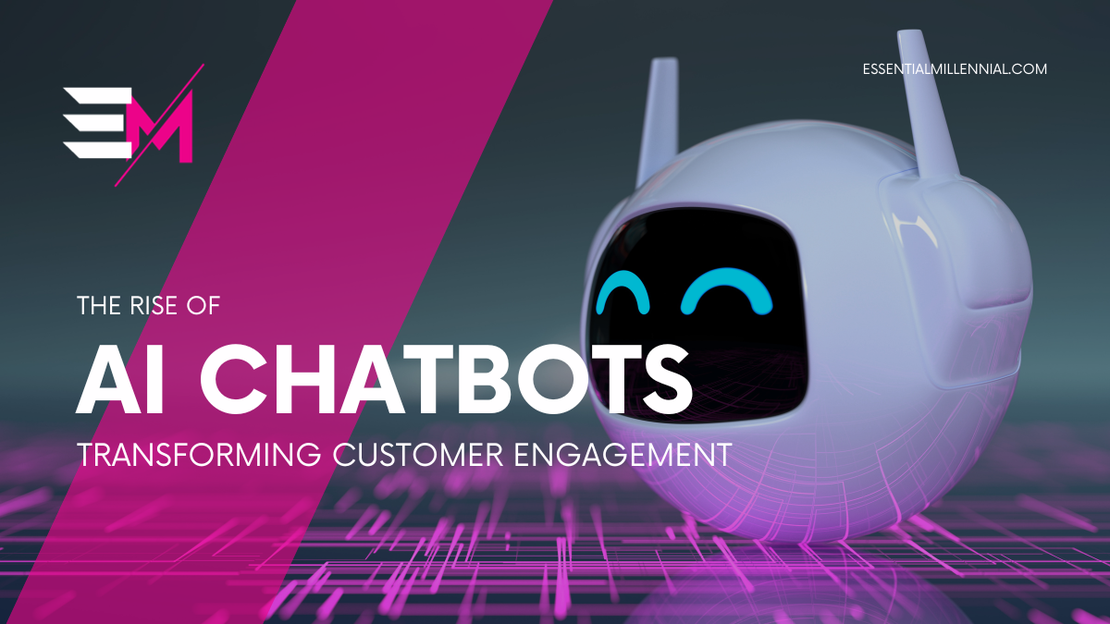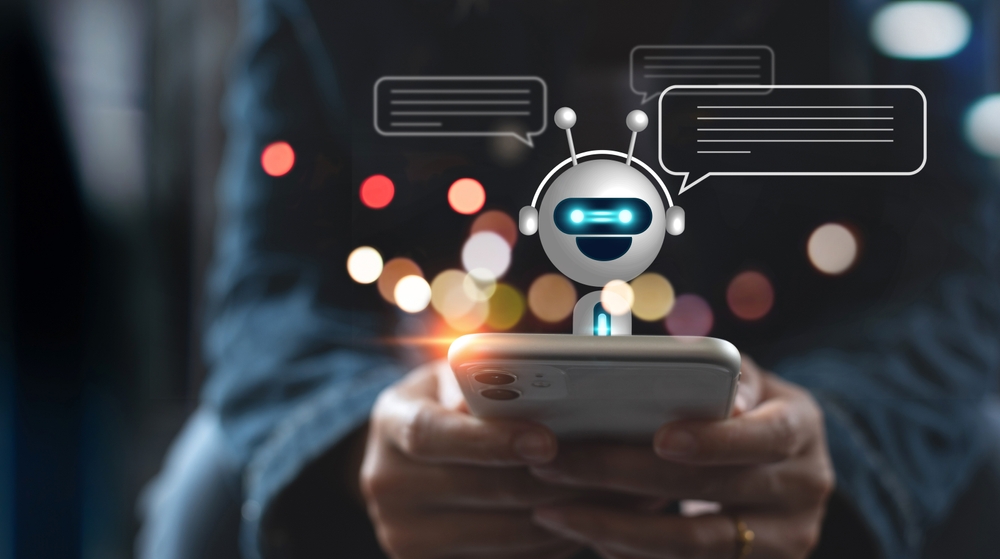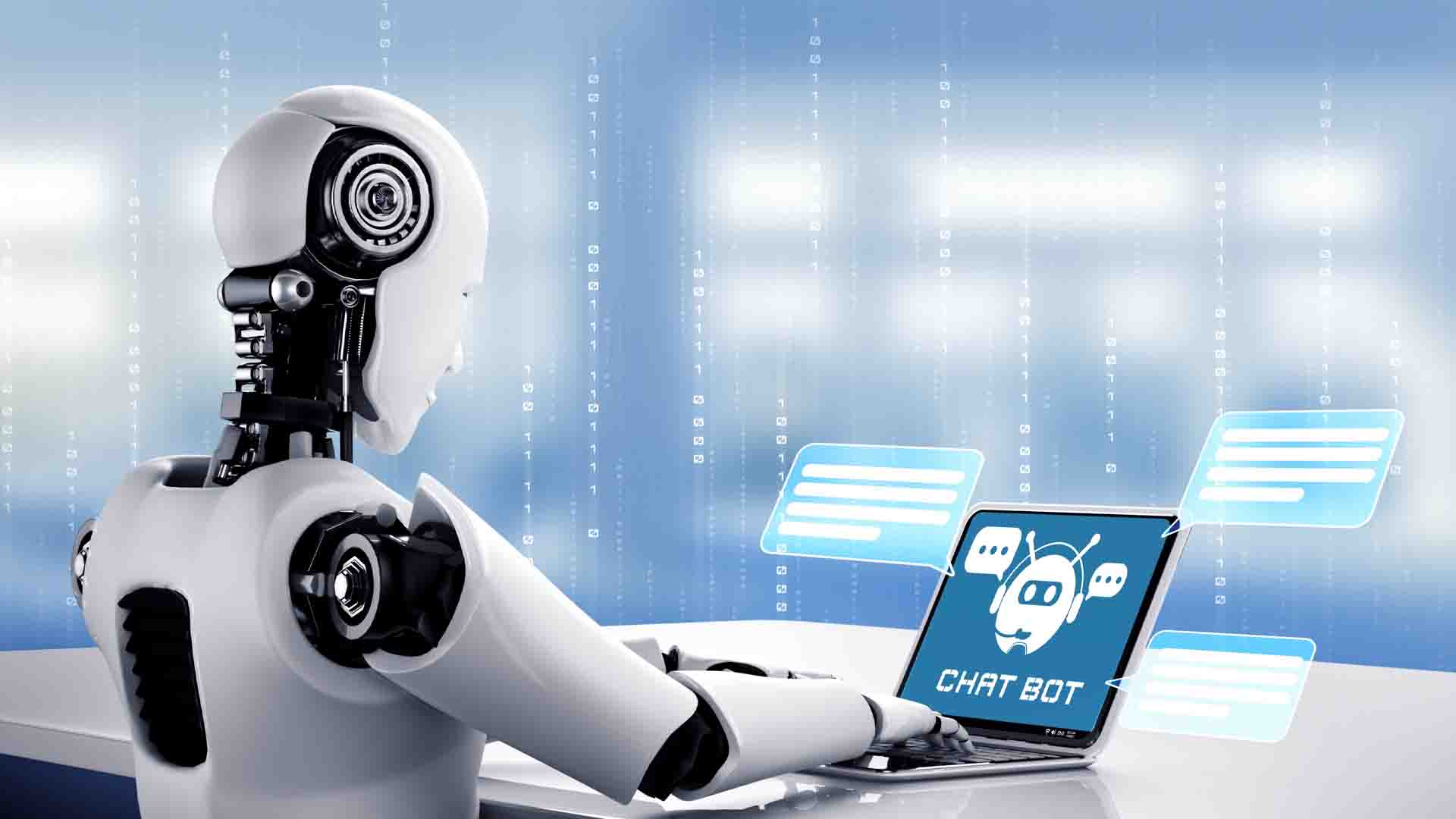“The Rise of the Conversational Website: How ChatGPT AI Chatbots are Transforming Customer Experience
Artikel Terkait The Rise of the Conversational Website: How ChatGPT AI Chatbots are Transforming Customer Experience
- Supercharge Your Lead Generation: How To Use ChatGPT To Create Killer Lead Magnets
- Unlock Content Gold: How ChatGPT Supercharges Your Content Repurposing Strategy
- Unleash Your Reel Potential: How To Create Engaging Reels Using ChatGPT
- Level Up Your Drip Campaigns With The Power Of ChatGPT: A Guide To Personalized Engagement
- Unleash Your TikTok Potential: Creative Ideas And Inspiration With ChatGPT
Table of Content
- 1 Artikel Terkait The Rise of the Conversational Website: How ChatGPT AI Chatbots are Transforming Customer Experience
- 2 Video tentang The Rise of the Conversational Website: How ChatGPT AI Chatbots are Transforming Customer Experience
- 3 The Rise of the Conversational Website: How ChatGPT AI Chatbots are Transforming Customer Experience
Video tentang The Rise of the Conversational Website: How ChatGPT AI Chatbots are Transforming Customer Experience
The Rise of the Conversational Website: How ChatGPT AI Chatbots are Transforming Customer Experience

In today’s rapidly evolving digital landscape, providing exceptional customer experience is no longer a luxury, but a necessity. Consumers expect instant gratification, personalized interactions, and seamless support, regardless of the time of day. Enter ChatGPT AI chatbots – a revolutionary technology transforming the way businesses engage with their customers online. These sophisticated AI-powered assistants are not just simple question-answer bots; they are capable of understanding complex queries, providing insightful responses, and even learning from each interaction, ultimately creating a more engaging and satisfying user experience.
This article delves into the world of ChatGPT AI chatbots, exploring their capabilities, benefits, implementation strategies, and potential impact on your website and overall business success.
What is ChatGPT AI Chatbot?
At its core, a ChatGPT AI chatbot is a software application designed to simulate human conversation. It leverages the power of Natural Language Processing (NLP) and Machine Learning (ML) to understand and respond to user inquiries in a natural and intuitive way. Unlike traditional chatbots that rely on pre-programmed scripts and limited keyword recognition, ChatGPT bots are trained on vast datasets of text and code, enabling them to:
- Understand nuanced language: ChatGPT can decipher the intent behind a user’s question, even if it’s phrased ambiguously or contains grammatical errors.
- Generate human-like responses: The responses are not robotic or generic, but rather tailored to the specific context of the conversation.
- Provide personalized support: By analyzing user data and past interactions, ChatGPT can offer customized recommendations and solutions.
- Learn and adapt: Through continuous learning, the chatbot improves its accuracy and effectiveness over time, becoming better equipped to handle a wider range of inquiries.
- Engage in multi-turn conversations: ChatGPT can maintain context throughout a conversation, allowing for more complex and in-depth interactions.

Key Benefits of Implementing ChatGPT AI Chatbots on Your Website:
Integrating a ChatGPT AI chatbot into your website offers a multitude of advantages for both your business and your customers:
- 24/7 Customer Support: One of the most significant benefits is the ability to provide round-the-clock customer support. ChatGPT bots can handle common inquiries, troubleshoot issues, and guide users through various processes, even outside of regular business hours. This ensures that your customers always have access to the information and assistance they need.
- Improved Customer Satisfaction: Instant responses and personalized support lead to happier and more satisfied customers. By quickly addressing their needs and resolving their problems, you can build stronger relationships and foster brand loyalty.
- Reduced Response Times: Waiting on hold or waiting for an email response can be frustrating for customers. ChatGPT bots eliminate these delays by providing immediate answers to common questions, significantly reducing response times and improving overall customer experience.
- Increased Efficiency: By automating routine tasks and handling simple inquiries, ChatGPT bots free up your human agents to focus on more complex and demanding issues. This can lead to significant improvements in productivity and efficiency.
- Lead Generation and Qualification: ChatGPT bots can be programmed to identify potential leads by asking qualifying questions and gathering relevant information. This information can then be passed on to your sales team, allowing them to focus on the most promising prospects.
- Cost Savings: By automating customer support and reducing the workload of your human agents, ChatGPT bots can help you save money on labor costs and other operational expenses.
- Personalized Product Recommendations: Based on user browsing history and purchase patterns, ChatGPT can offer personalized product recommendations, boosting sales and enhancing the shopping experience.
- Data Collection and Insights: Every interaction with a ChatGPT bot generates valuable data that can be used to gain insights into customer behavior, preferences, and pain points. This data can be used to improve your products, services, and marketing efforts.
- Improved Website Navigation: ChatGPT can help users navigate your website more easily by answering their questions about specific pages, products, or services.
- Multilingual Support: Many ChatGPT platforms support multiple languages, allowing you to cater to a global audience and provide support in their native language.


Implementing ChatGPT AI Chatbots: A Step-by-Step Guide:
Implementing a ChatGPT AI chatbot on your website involves careful planning and execution. Here’s a step-by-step guide to help you get started:
- Define Your Goals and Objectives: Before you start, clearly define what you want to achieve with your chatbot. Are you looking to improve customer satisfaction, reduce response times, generate leads, or something else? Having clear goals will help you choose the right platform and customize the chatbot to meet your specific needs.
- Choose the Right Platform: There are many ChatGPT AI chatbot platforms available, each with its own features, pricing, and capabilities. Research different platforms and choose one that aligns with your goals, budget, and technical expertise. Consider factors like:
- Integration Capabilities: Does the platform integrate seamlessly with your website, CRM, and other business systems?
- Customization Options: Can you customize the chatbot’s appearance, personality, and responses to match your brand?
- Analytics and Reporting: Does the platform provide detailed analytics and reporting to track performance and identify areas for improvement?
- Scalability: Can the platform handle a large volume of inquiries without compromising performance?
- Pricing: What is the pricing structure, and does it fit within your budget?
- Train Your Chatbot: Once you’ve chosen a platform, you’ll need to train your chatbot to understand and respond to user inquiries. This involves providing the chatbot with a knowledge base of information about your products, services, and company policies. You can also use pre-built templates and training data to accelerate the process.
- Design the User Interface (UI): The chatbot’s UI should be user-friendly and visually appealing. Make sure it’s easy for users to find the chatbot and start a conversation. Consider using a clear and concise welcome message, and provide options for users to choose from a list of common questions.
- Integrate with Your Website: Integrate the chatbot into your website in a prominent and easily accessible location. Consider placing it on your homepage, product pages, and contact page.
- Test and Optimize: Before launching your chatbot, thoroughly test it to ensure that it’s working correctly and providing accurate information. Get feedback from users and make adjustments as needed. Continuously monitor the chatbot’s performance and optimize its responses to improve its effectiveness.
- Promote Your Chatbot: Let your customers know that you have a chatbot available to assist them. Promote it on your website, social media channels, and email newsletters.
- Monitor and Maintain: Regularly monitor the chatbot’s performance and make adjustments as needed. Keep the knowledge base up-to-date and train the chatbot on new information. Address any issues or bugs that may arise.
Challenges and Considerations:
While ChatGPT AI chatbots offer numerous benefits, there are also some challenges and considerations to keep in mind:
- Accuracy and Reliability: While ChatGPT bots are becoming increasingly accurate, they are not perfect. They can sometimes provide incorrect or misleading information, especially when dealing with complex or nuanced inquiries. It’s important to regularly monitor the chatbot’s performance and make adjustments as needed.
- Security and Privacy: ChatGPT bots collect user data, so it’s important to ensure that the data is stored securely and used in compliance with privacy regulations. Be transparent with users about how their data is being collected and used.
- Cost: Implementing and maintaining a ChatGPT AI chatbot can be expensive, especially if you need to hire developers or consultants to customize the platform.
- Over-Reliance: It’s important to avoid over-relying on chatbots and ensure that human agents are available to handle complex or sensitive issues.
- Ethical Considerations: As AI becomes more sophisticated, it’s crucial to address ethical concerns related to bias, misinformation, and transparency.
The Future of ChatGPT AI Chatbots:
The future of ChatGPT AI chatbots is bright. As AI technology continues to advance, we can expect to see even more sophisticated and capable chatbots that can handle a wider range of tasks and provide even more personalized support. Future trends include:
- Increased Integration with Other Technologies: We can expect to see greater integration between ChatGPT bots and other technologies, such as voice assistants, augmented reality, and virtual reality.
- More Sophisticated Natural Language Processing: NLP technology will continue to improve, allowing chatbots to understand and respond to user inquiries with even greater accuracy and fluency.
- Proactive Customer Support: Chatbots will become more proactive in anticipating customer needs and providing assistance before they even ask for it.
- Hyper-Personalization: Chatbots will be able to leverage even more data to provide highly personalized experiences tailored to each individual user.
FAQ (Frequently Asked Questions):
- Q: How much does it cost to implement a ChatGPT AI chatbot?
- A: The cost varies depending on the platform you choose, the level of customization required, and the size of your business. Some platforms offer free trials or basic plans, while others charge a monthly or annual fee.
- Q: Do I need to be a tech expert to implement a ChatGPT AI chatbot?
- A: Not necessarily. Many platforms offer user-friendly interfaces and drag-and-drop tools that make it easy to create and customize chatbots without any coding experience. However, if you need to integrate the chatbot with complex systems or require advanced customization, you may need to hire a developer.
- Q: How long does it take to implement a ChatGPT AI chatbot?
- A: The implementation time can vary depending on the complexity of the chatbot and the amount of training required. A simple chatbot can be implemented in a few days, while a more complex chatbot may take several weeks or months.
- Q: How do I measure the success of my ChatGPT AI chatbot?
- A: You can measure the success of your chatbot by tracking metrics such as customer satisfaction scores, response times, lead generation rates, and cost savings.
- Q: What if the chatbot can’t answer a customer’s question?
- A: You should have a system in place for escalating inquiries to human agents when the chatbot is unable to provide an adequate response. This could involve transferring the conversation to a live chat agent or providing the customer with contact information for your support team.
Conclusion:
ChatGPT AI chatbots are rapidly transforming the way businesses interact with their customers online. By providing 24/7 support, reducing response times, and personalizing the customer experience, these intelligent assistants can help you improve customer satisfaction, increase efficiency, and drive revenue growth. While there are challenges and considerations to keep in mind, the benefits of implementing a ChatGPT AI chatbot on your website far outweigh the risks. As AI technology continues to evolve, ChatGPT bots will become even more sophisticated and capable, playing an increasingly important role in the future of customer service and online engagement. Embrace this technology and unlock the potential for a more conversational, engaging, and ultimately, successful website.
